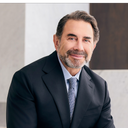I want to get a nose job done to fix the appearance of my nose and also some breathing problems. Will insurance only cover the breathing problem surgery or the whole thing?
Answers (9)
From board-certified doctors and trusted medical professionals
Dr. Richard W. Fleming, MD (retired)
Board Certified Facial Plastic Surgeon
Answer
More Rhinoplasty Questions
See all Rhinoplasty Q&AWE SEND PRETTY
EMAILS
What’s trending? Who’s turning heads? Which TikTok myths need busting? We’ve got you. No fluff, no gatekeeping—just real talk. Get our free, unfiltered newsletter.





